-
 Bitcoin
Bitcoin $83,622.6306
-1.03% -
 Ethereum
Ethereum $1,589.6945
-1.99% -
 Tether USDt
Tether USDt $1.0000
0.01% -
 XRP
XRP $2.0889
-1.88% -
 BNB
BNB $580.0353
-0.85% -
 Solana
Solana $126.7178
-2.33% -
 USDC
USDC $1.0000
-0.01% -
 TRON
TRON $0.2506
-0.43% -
 Dogecoin
Dogecoin $0.1537
-3.31% -
 Cardano
Cardano $0.6091
-4.20% -
 UNUS SED LEO
UNUS SED LEO $9.3201
-0.87% -
 Chainlink
Chainlink $12.2503
-3.06% -
 Avalanche
Avalanche $19.0105
-5.53% -
 Stellar
Stellar $0.2359
-1.88% -
 Toncoin
Toncoin $2.8505
-1.13% -
 Shiba Inu
Shiba Inu $0.0...01170
-2.63% -
 Sui
Sui $2.0950
-4.30% -
 Hedera
Hedera $0.1569
-4.99% -
 Bitcoin Cash
Bitcoin Cash $319.8208
-1.32% -
 Litecoin
Litecoin $75.7238
-2.04% -
 Polkadot
Polkadot $3.5266
-3.99% -
 Dai
Dai $1.0001
0.01% -
 Bitget Token
Bitget Token $4.2562
-1.04% -
 Hyperliquid
Hyperliquid $15.1159
-4.03% -
 Ethena USDe
Ethena USDe $0.9992
0.01% -
 Pi
Pi $0.6455
-12.89% -
 Monero
Monero $215.1633
0.19% -
 Uniswap
Uniswap $5.1866
-3.08% -
 OKB
OKB $51.9360
-0.45% -
 Pepe
Pepe $0.0...06972
-4.89%
How to configure mining software to connect to a mining pool?
To mine crypto efficiently, configure CGMiner by editing `cgminer.conf` with your mining pool's details, then launch it with `cgminer -c cgminer.conf`.
Apr 10, 2025 at 04:56 am

Configuring mining software to connect to a mining pool is a crucial step for anyone looking to participate in cryptocurrency mining. This process involves setting up your mining software to communicate with a mining pool server, which then coordinates the mining efforts of multiple miners to increase the chances of solving cryptographic puzzles and earning rewards. In this article, we will walk you through the detailed steps required to configure popular mining software to connect to a mining pool, ensuring you can start mining efficiently.
Choosing the Right Mining Software
Before you can connect to a mining pool, you need to select the appropriate mining software for your setup. Popular mining software includes options like CGMiner, EasyMiner, and MultiMiner, each with its own set of features and compatibility with different cryptocurrencies. For this guide, we will focus on configuring CGMiner, a widely used and versatile mining software.
Download and Install CGMiner: Visit the official CGMiner website and download the latest version compatible with your operating system. Follow the installation instructions provided to set up the software on your computer.
Verify Installation: After installation, open a command prompt or terminal and type
cgminer --versionto ensure the software is correctly installed and functioning.
Selecting a Mining Pool
Once you have your mining software ready, the next step is to choose a mining pool. Mining pools are groups of miners who combine their computational resources to increase their chances of solving a block and sharing the rewards. Some well-known mining pools include Slush Pool, Antpool, and F2Pool.
Research and Choose a Pool: Consider factors such as pool fees, payout structure, and server locations when selecting a mining pool. Visit the pool's website to gather this information and decide which pool best suits your needs.
Register an Account: Most mining pools require you to create an account. Follow the registration process on the pool's website, and make sure to note down your username and any other required credentials.
Configuring CGMiner to Connect to a Mining Pool
With your mining software installed and a mining pool selected, you can now proceed to configure CGMiner to connect to the pool. This involves editing the configuration file or using command-line arguments to specify the pool's details.
Locate the Configuration File: CGMiner's configuration file is typically named
cgminer.confand can be found in the same directory where you installed the software.Edit the Configuration File: Open the
cgminer.conffile with a text editor and add the following lines to connect to your chosen mining pool:"pools": [
{"url": "stratum+tcp://pool_address:port", "user": "your_username", "pass": "your_password"}
]Replace
pool_address,port,your_username, andyour_passwordwith the actual details provided by your mining pool.Save and Close the File: After adding the necessary configuration, save the file and close the text editor.
Launch CGMiner: Open a command prompt or terminal, navigate to the directory where CGMiner is installed, and run the following command to start the software:
cgminer -c cgminer.confThis command tells CGMiner to use the configuration file you just edited.
Verifying the Connection
After launching CGMiner, it's important to verify that your software has successfully connected to the mining pool. Monitoring the connection can be done through the CGMiner interface or by checking the pool's website.
Check CGMiner Output: When CGMiner starts, it will display a series of messages indicating its status. Look for messages that confirm a successful connection to the pool, such as "Connected to stratum+tcp://pool_address:port".
Monitor Pool Dashboard: Log into your mining pool account and navigate to the dashboard or statistics page. You should see your miner listed and actively contributing to the pool's hash rate.
Troubleshooting Common Issues
Even with careful configuration, you may encounter issues when connecting to a mining pool. Common problems include incorrect pool details, network connectivity issues, and software conflicts.
Incorrect Pool Details: Double-check the pool address, port, username, and password entered in the configuration file. Any errors in these details can prevent a successful connection.
Network Connectivity: Ensure your internet connection is stable and that there are no firewalls or security software blocking the connection to the mining pool server.
Software Conflicts: If you are running other mining software or applications that use similar resources, they may interfere with CGMiner. Close any unnecessary programs and try reconnecting.
Update Software: If issues persist, consider updating CGMiner to the latest version, as newer releases may include fixes for known connectivity problems.
Adjusting Mining Parameters
Once connected to a mining pool, you may want to adjust various mining parameters to optimize your mining performance. Key parameters to consider include the number of threads, intensity, and GPU settings.
Number of Threads: Adjust the number of CPU threads used for mining by adding the following line to your
cgminer.conffile:"threads": 4Replace
4with the desired number of threads based on your CPU capabilities.Intensity: Control the intensity of your mining operations, which affects the hash rate and power consumption. Add the following line to your configuration file:
"intensity": "d,13"Adjust the intensity value (
13in this example) to find the optimal balance between performance and stability.GPU Settings: If you are using GPUs for mining, you can specify GPU-specific settings in the configuration file. For example:
"gpu-threads": 2,
"gpu-engine": 1000,
"gpu-memclock": 1200These settings control the number of threads per GPU, the GPU engine clock, and the memory clock, respectively. Adjust these values based on your GPU model and performance requirements.
Frequently Asked Questions
Q: Can I connect to multiple mining pools with CGMiner?
A: Yes, CGMiner supports connecting to multiple mining pools. You can add additional pool configurations to the cgminer.conf file by including more entries in the pools array. This allows you to switch between pools automatically if one becomes unavailable.
Q: How do I know if my mining pool is performing well?
A: You can assess the performance of your mining pool by monitoring the pool's overall hash rate, the frequency of block discoveries, and your individual contribution to the pool's efforts. Most mining pools provide detailed statistics and dashboards to help you track these metrics.
Q: What should I do if my mining software crashes frequently?
A: Frequent crashes can be caused by overheating, overclocking, or software bugs. Ensure your mining hardware is properly cooled, and consider reducing the intensity or overclock settings. Also, keep your mining software updated to the latest version to benefit from any stability improvements.
Q: Is it possible to mine different cryptocurrencies with the same mining software?
A: Yes, many mining software programs, including CGMiner, support mining multiple cryptocurrencies. You can configure different algorithms and pool settings for various cryptocurrencies within the same software, allowing you to switch between them as needed.
Disclaimer:info@kdj.com
The information provided is not trading advice. kdj.com does not assume any responsibility for any investments made based on the information provided in this article. Cryptocurrencies are highly volatile and it is highly recommended that you invest with caution after thorough research!
If you believe that the content used on this website infringes your copyright, please contact us immediately (info@kdj.com) and we will delete it promptly.
- Public Companies Added Nearly 100,000 Bitcoin To Their Balance Sheets During Q1 2025
- 2025-04-16 07:15:16
- Amidst the Stormy Seas of the Crypto World, a New Titan Emerges—BlockDAG
- 2025-04-16 07:15:16
- Bitcoin (BTC) reclaims $85,000, setting the stage for altcoins to rally
- 2025-04-16 07:15:14
- The Pi Network token price has increased by more than 14% over the past week.
- 2025-04-16 07:15:14
- A wave of capital is flowing out of Ethereum [ETH] and into Tron [TRX]
- 2025-04-16 07:05:14
- Figment to power 3iQ's newly approved Solana exchange-traded fund (ETF)
- 2025-04-16 07:05:14
Related knowledge
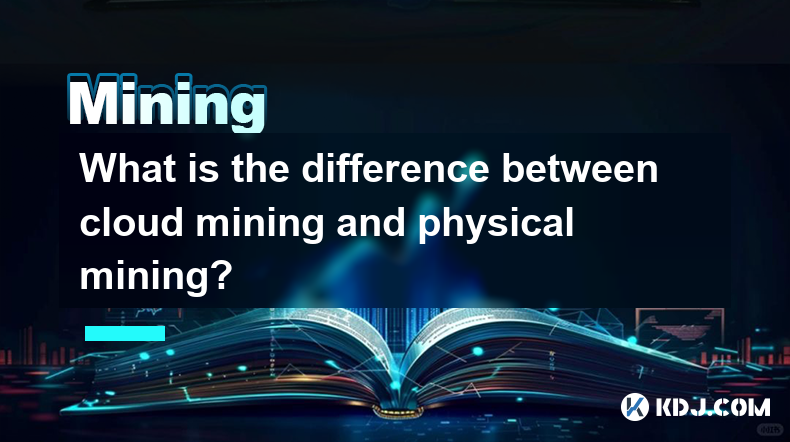
What is the difference between cloud mining and physical mining?
Apr 16,2025 at 01:49am
What is the difference between cloud mining and physical mining? In the world of cryptocurrencies, mining is the process by which new coins are generated and transactions are verified and added to the blockchain. There are two primary methods of mining: cloud mining and physical mining. Understanding the differences between these two approaches can help...
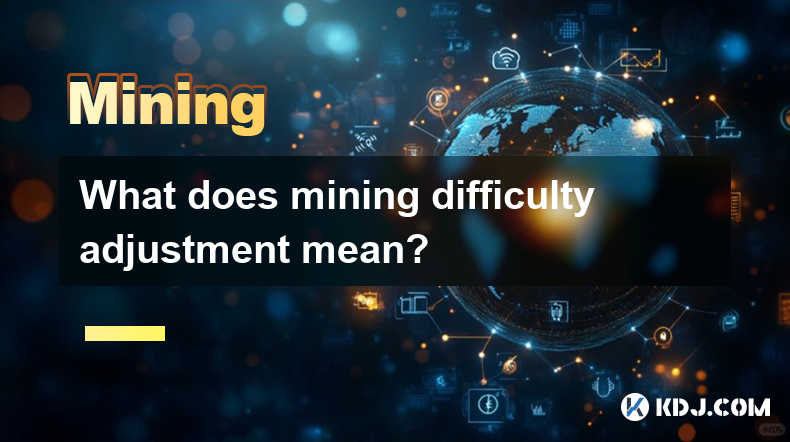
What does mining difficulty adjustment mean?
Apr 16,2025 at 12:42am
What does mining difficulty adjustment mean? Mining difficulty adjustment is a crucial mechanism in blockchain networks, particularly in Proof of Work (PoW) systems like Bitcoin. It ensures that the rate at which new blocks are added to the blockchain remains consistent, despite fluctuations in the total computational power (hash rate) of the network. T...
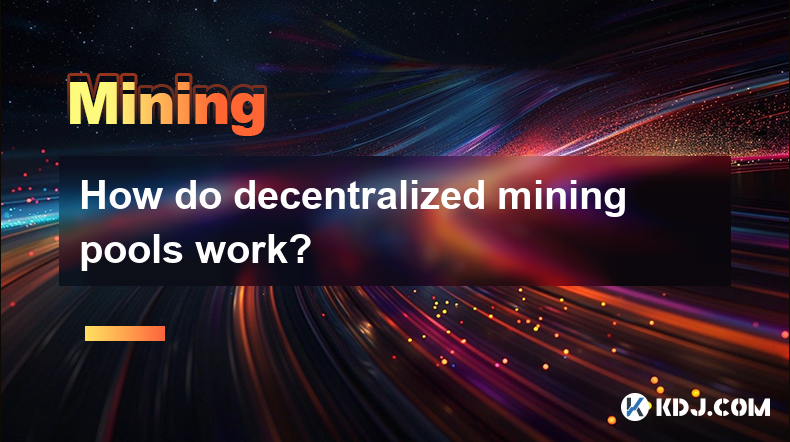
How do decentralized mining pools work?
Apr 16,2025 at 05:42am
Decentralized mining pools represent a significant evolution in the world of cryptocurrency mining, offering a more democratic and transparent approach compared to traditional centralized pools. In this article, we will explore the mechanics of decentralized mining pools, their benefits, and how they operate within the cryptocurrency ecosystem. What are...
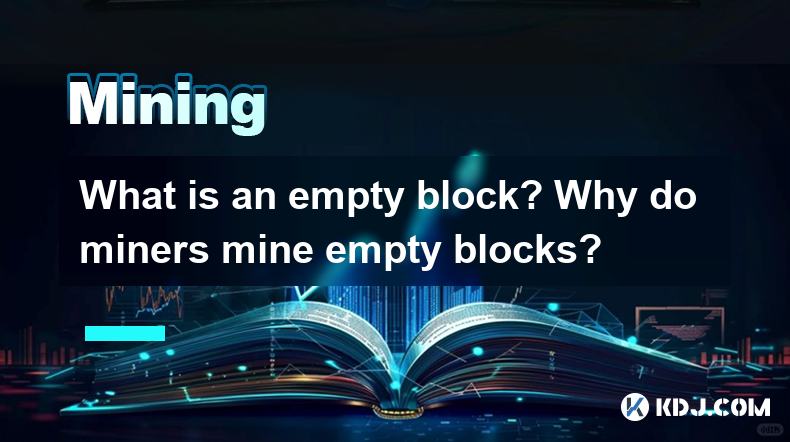
What is an empty block? Why do miners mine empty blocks?
Apr 16,2025 at 01:28am
What is an Empty Block?An empty block in the context of blockchain technology, particularly in cryptocurrencies like Bitcoin, refers to a block that contains no transactions other than the coinbase transaction. The coinbase transaction is a special transaction in which new bitcoins are generated and awarded to the miner who successfully mines the block....

What is the KawPow algorithm?
Apr 16,2025 at 06:43am
The KawPow algorithm is a proof-of-work (PoW) consensus mechanism specifically designed for the Ravencoin blockchain. It evolved from the earlier X16R and X16RV2 algorithms, aiming to enhance the security and efficiency of the mining process. KawPow was introduced to address the issues associated with ASIC (Application-Specific Integrated Circuit) miner...
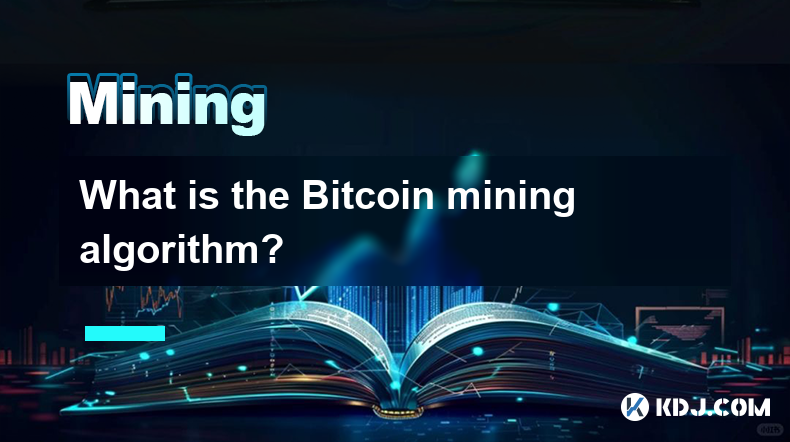
What is the Bitcoin mining algorithm?
Apr 15,2025 at 08:00pm
What is the Bitcoin Mining Algorithm? Bitcoin mining is a crucial process that maintains the integrity and security of the Bitcoin network. At the heart of this process lies the Bitcoin mining algorithm, which is responsible for verifying transactions and adding them to the blockchain. Understanding this algorithm is essential for anyone interested in t...

What is the difference between cloud mining and physical mining?
Apr 16,2025 at 01:49am
What is the difference between cloud mining and physical mining? In the world of cryptocurrencies, mining is the process by which new coins are generated and transactions are verified and added to the blockchain. There are two primary methods of mining: cloud mining and physical mining. Understanding the differences between these two approaches can help...

What does mining difficulty adjustment mean?
Apr 16,2025 at 12:42am
What does mining difficulty adjustment mean? Mining difficulty adjustment is a crucial mechanism in blockchain networks, particularly in Proof of Work (PoW) systems like Bitcoin. It ensures that the rate at which new blocks are added to the blockchain remains consistent, despite fluctuations in the total computational power (hash rate) of the network. T...

How do decentralized mining pools work?
Apr 16,2025 at 05:42am
Decentralized mining pools represent a significant evolution in the world of cryptocurrency mining, offering a more democratic and transparent approach compared to traditional centralized pools. In this article, we will explore the mechanics of decentralized mining pools, their benefits, and how they operate within the cryptocurrency ecosystem. What are...

What is an empty block? Why do miners mine empty blocks?
Apr 16,2025 at 01:28am
What is an Empty Block?An empty block in the context of blockchain technology, particularly in cryptocurrencies like Bitcoin, refers to a block that contains no transactions other than the coinbase transaction. The coinbase transaction is a special transaction in which new bitcoins are generated and awarded to the miner who successfully mines the block....

What is the KawPow algorithm?
Apr 16,2025 at 06:43am
The KawPow algorithm is a proof-of-work (PoW) consensus mechanism specifically designed for the Ravencoin blockchain. It evolved from the earlier X16R and X16RV2 algorithms, aiming to enhance the security and efficiency of the mining process. KawPow was introduced to address the issues associated with ASIC (Application-Specific Integrated Circuit) miner...

What is the Bitcoin mining algorithm?
Apr 15,2025 at 08:00pm
What is the Bitcoin Mining Algorithm? Bitcoin mining is a crucial process that maintains the integrity and security of the Bitcoin network. At the heart of this process lies the Bitcoin mining algorithm, which is responsible for verifying transactions and adding them to the blockchain. Understanding this algorithm is essential for anyone interested in t...
See all articles























































































